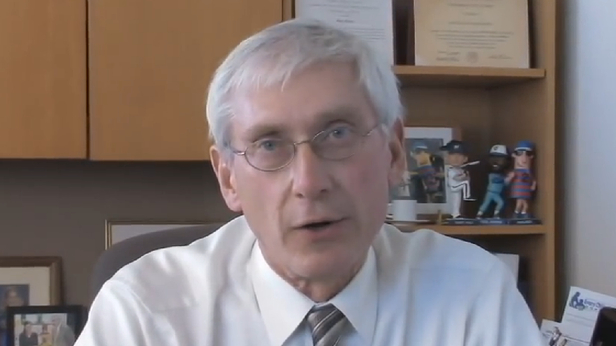
by Christian D’Andrea
MacIver Institute Education Policy Analyst
Wisconsin State Superintendent Tony Evers laid out his wish list for the state’s public education systems in his 2015-17 state budget request unveiled Monday. It includes a revamped funding formula, a minimum baseline of state aid for all districts, and a $613m increase in overall spending for the next two school years.
The latest budget proposal from Superintendent Evers and the Department of Public Instruction (DPI) asks for nearly $13 billion to operate Wisconsin’s publicly funded schools. This includes an increase of more than $54 million for the state’s voucher schools across the three existing private school choice programs. Another $16.3 million would go to the state’s independent charter schools in Milwaukee and Racine.
Evers’s plan refers heavily to his Fair Funding for our Future plan – a plan targeted at revamping the state’s funding formula for public schools. The DPI head has proposed this plan at the beginning of the 2011-13 and 2013-15 budget cycles but has had his request denied by Governor Scott Walker thanks in part to the significant price tag that would come with the change. Evers is hopeful that the third time will be the charm with his reform initiative.
Fair Funding for our Future would set a baseline for all of Wisconsin’s 424 public school districts and ensure that every child gets at least $3,000 in per-pupil funding every year. In 2012-13, the last year that data is available, the average WI district received $5,615 in state revenue. However, districts with a wealthier home base – vacation properties in the northeast region of the state, for example – may have received less or even no state funding that, in Evers’s opinion, may not accurately reflect the pupil population.
Other changes, such as a formula tweak that factors local poverty levels into state funding amounts and a 10 percent limit on funding reductions for rural school districts that are losing students, would have a significant impact on how K-12 education is funded in Wisconsin. The Superintendent is also requesting that local districts be able to boost their local revenue limits by an average of two percent – or $200 in 2015-16. Currently, districts are not allowed to make increases to those limits.
The program would also tie funding increases to certain students and initiatives within a district. Evers’s budget calls for an extra $100 in state funding ($2.3m total) for every pupil that has been labeled as an “English Language Learner.” It would also increase funding for Wisconsin’s special needs students by more than $100 million over the next two years.
There were several other initiatives included in the request that would have a varying impact on Wisconsin’s students. Evers requested only $500,000 to provide grants and established a statewide center to encourage science, technology, engineering, and math (STEM) education in K-12 schools. More than $34 million would go towards operating and revitalizing the state’s public and school library systems. Another $8.3 million increase would be targeted at providing transportation for traditional public school students as well as those who take advantage of the state’s open enrollment program to attend institutions in neighboring districts.
Superintendent Evers has pushed for a simplified funding formula that guarantees state money to local districts twice before. Now, Fair Funding for our Future will head to the Governor’s office for a third time. An overall spending increase of more than $600 million may make it a tough pill for legislators to swallow. While last session’s increases in per-pupil funding have educational spending trending upwards, Evers’s latest request may be too much cost with too little reform for Wisconsin’s policy leaders.